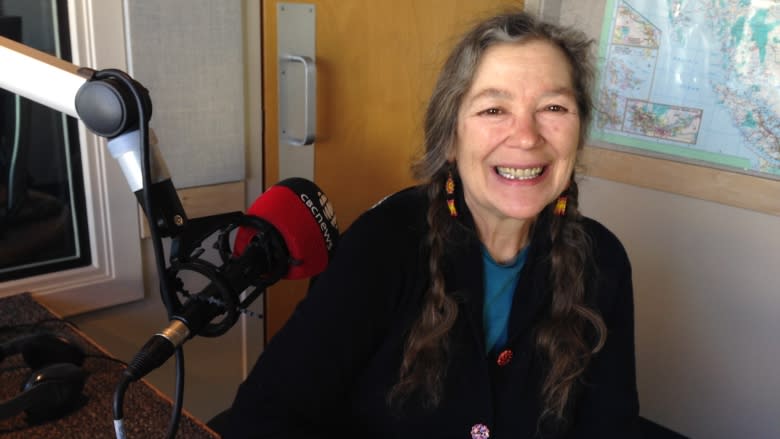Khmer Rouge victims reunited 40 years after daring rescue
Eloise Charet can't forget the horrific scene at the orphanage she walked into in Cambodia in 1975.
"One of the rooms had all these children that were left to die," says Charet. "You could see ants crawling all over their bodies, flies, everything, devouring them while they were still alive."
March marks 40 years since Charet and her sister Anna helped approximately 55 orphaned babies and children escape from the terror ofPol Pot's Khmer Rouge in Cambodia.
At the time, the horror of the Khmer Rouge was escalating — more than 1.5 million Cambodians would die in the next four years in one of the most notorious genocides in history.
Charet and her sister had gone to Cambodia to start an orphanage in Phnom Penh. They called the orphanage Canada House.
She's been trying to find all the children she saved. She was recently reunited with one of them, Sam Nakatsu, over the phone when CBC's Radio West spoke to them about the anniversary.
Personal history comes into focus
Growing up, Nakatsu, now an RCMP officer in Williams Lake, B.C., knew he had been abandoned at an orphanage because he was half Japanese and half Cambodian. He knew he had been found in a room, left to die.
But he didn't know about Canada House or about Charet and her sister. And until the Radio West interview, he had never heard her voice.
"It's pretty neat to hear her talk about that room with the babies crawling around with the flies," says Nakatsu. "It's interesting to hear how stories change over time. But that kind of fits with everything I was told."
The details of Nakatsu's story came into focus a year ago when he saw an article in the Osoyoos Times about Art Purdon, an Osoyoos resident who had helped at the orphanage in PhnomPenh.
"That’s when I was overwhelmed and learned that there were so many other brothers and sisters and two new mothers out there in the world that I hadn’t known for 39 years," says Nakatsu.
He says up until then, he had felt like a part of himself was missing.
"It’s something I’ve been searching for, and never, ever understood what I was even searching," says Nakatsu.
He says that speaking with his fellow adoptees and Charet has made him realize what he was looking for.
"When I learned this story, and when I hear Eloise talk, and I talk to my brothers and sisters, I feel complete now."
Charet is happy to have heard Nakatsu's voice. So far, of all the children she's been looking for, she’s been in touch with about 20 of them.
"The children lost part of their past," says Charet. "When we left Cambodia we swore that we would try and connect them somehow."
A lifetime of helping children
Charet and her sister, both from Montreal, were in their 20s when they went to Cambodia to start an orphanage in Phnom Penh. Charet says part of what compelled her and her sister to help was the anti-war sentiment of the time.
"The Vietnam War affected our entire generation," says Charet. "It had gone on so long, we wanted to do something."
Although the sisters were only in Cambodia for five months, Eloise Charet says "it felt like a lifetime."
The sisters were familiar with helping children. Besides growing up with eight other siblings, they had also helped families in Canada who had adopted international children.
The final push to go to Cambodia came from humanitarian Naomi Bronstein, who asked for their help. Bronstein is renowned for having saved thousands of orphaned children from war-torn regions around the world throughout her lifetime.
The sisters landed first in Saigon, now called Ho Chi Minh City, in Vietnam.
"There was close to a million orphans in Vietnam," says Charet. "That war had broken families and left so many children abandoned."
They discovered the situation in Cambodia was even worse. Charet says there was only one orphanage in the country. When the saw it, they discovered the abandoned children and babies left to die.
"Upstairs there was a room, it was very small, it was overcrowded," says Charet. "The administrator didn’t know what to do anymore."
The sisters took the children back to their hotel, says Charet. Eventually, they were offered a house, which became Canada House.
Babies were sometimes left on the front steps. Occasionally, soldiers would bring them children they had found abandoned in ransacked villages.
‘We refused to leave without our babies’
As the situation in Cambodia deteriorated, Canada House was put on evacuation notice. Charet says it became increasingly difficult to get flights out of the bombed-out airport.
"We refused to leave without our babies," says Charet. "They’d already been abandoned before, how could we abandon them once more?"
Charet says she and her sister worked with government officials to get passports for all the children so they could send them to Canada.
The evacuation was a daring last-minute escape, says Charet. Through an airline stewardess the sisters had met, they managed to secure a flight for all the children.
It was difficult for planes to land — they sometimes got shot at as they arrived, and the runways were riddled with potholes.
"They came in on a suicide mission to get us," says Charet.
The flight left from the middle of a field filled with broken airplanes. It was one of the last flights out of the country.
To listen to the Eloise Charet and Sam Nakatsu's reunion, click on the audio labelled: A reunion 40 years in the making



